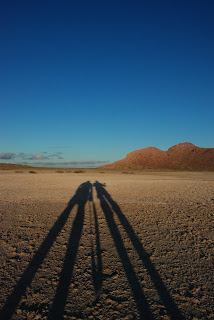On October 13th,
Sea Turtle was finally put back into the water where she belongs, and of course, water came into the bilge (maybe we should have waited until the 14th!) But this is normal after being on the hard for so long, just had to wait a few days till the stuffing box expanded so water wouldn't leak in. Got everything put away and at last she is now back to normal.
When we first got back to
Sea Turtle when she was on the hard, Jordan noticed a black widow spider, with a full egg sack, crawling across the hull. He very quickly got rid of it, but I won't say how! Then as we were working on the boat and it was still so very hot out, we left the windows open at night so the boat would cool off a bit as we went back to the motel. But one morning, we discovered a mass of bees that had decided to make the inside of
Sea Turtle their new home. Jordan was able to scare them all off, but after that, all windows were closed at night until we moved aboard!
As there was little wind, we motored to
Guaymas Singlar Marina from San Carlos on October 17th, a short 3 to 4 hour trip. We were expecting a smooth ride so I did not take any Stugeron to prevent seasickness. So of course, we found ourselves riding large waves, and as I had not been on a boat for several months, I started to feel nauseous. Wouldn't you know it - after sailing all the way from Victoria to San Carlos over the last year and never actually being sick - NOW it happens! Guess I'd better take my Stugeron from now on till I'm used to being on the water again.
Jordan has been working his butt off getting the decks all ready to paint. He wants no help (including mine!) even though it's a much bigger job than expected, but he wants to make sure it's done right so it lasts for years to come.
The job consists of scraping off all the non-skid, sanding and grinding, filling all the cracks with epoxy or putty, sanding again, applying primer, sanding again, and then finally painting. Expect to be ready to start painting in about 10 days, which I can help with. In the meantime, I've been sanding and prepping all the "brightwork" - getting the teak ready for a few coats of Cetol.
Areas filled with putty and then sanded
Areas painted with gray coloured primer
We had some company from Canada, our buds Bruce and Jeannie and their daughter Natalie. They are in San Carlos for about 3 weeks as their boat, SV
Jabula, is on the hard there. Went for a delicious bite and ice cold drink at Pancho Villas, within walking distance of
Guaymas Singlar Marina. Very popular place for gringos.
We've used all of the stored water in our tanks and can't make any till we head out to sea again. The marina sent down the guys that sell the 5-gallon jugs so we decided to fill up as it was so cheap - 11 pesos for each 5-gallon jug which is about $1.00 Canadian each! We'll just use the purchased water for drinking and cooking and the local hose water for cleaning, dishes, etc.
While filling, we discovered that
Sea Turtle has a larger water capacity than we thought. We were under the impression that she holds 100 gallons but we ended up purchasing a total of 29 jugs = 145 gallons! We have enough water now until we head out to sea where we can start making our own with our watermaker.



















































